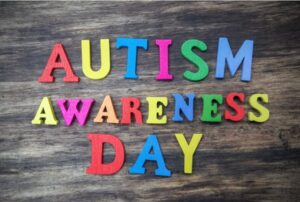Introduction with a Story
Children often experience stomachaches for various reasons. For example, Lucas eats too many sweets and complains of a stomachache, Emma wakes up in the middle of the night with stomach pain after drinking cold milk, and Jack feels bloated and uncomfortable after eating too quickly. As parents, it's natural to worry: “Did they eat something bad? What should they eat now?”
Diet plays a crucial role in easing stomach discomfort. So, what should children eat when they have a stomachache? What foods should they avoid? Let’s explore the best dietary choices for children experiencing stomach pain.
Common Causes of Stomachaches in Children
Before making dietary adjustments, it’s essential to understand the possible reasons behind a child’s stomachache:
- Indigestion – Overeating, eating too fast, or consuming hard-to-digest foods (e.g., greasy or fried foods).
- Gastroenteritis (Stomach Flu) – Caused by a viral or bacterial infection, often accompanied by vomiting or diarrhea.
- Constipation – A diet low in fiber or insufficient water intake can lead to difficulty in passing stools.
- Food Intolerance or Allergies – Some children may react poorly to dairy (lactose intolerance) or gluten.
- Gas and Bloating – Certain foods (e.g., beans, carbonated drinks) can cause excess gas, leading to discomfort.
- Cold Exposure – Drinking cold beverages or eating cold foods may trigger stomach cramps in some children.
Depending on the cause, the right dietary choices can help relieve symptoms and support digestion.
Best Foods for a Child with a Stomachache
1. Mild and Easy-to-Digest Foods
When a child has a stomachache, it's best to offer light, bland foods that are easy to digest:
- Plain rice porridge – Gentle on the digestive system and helps absorb excess stomach acids.
- Steamed or mashed potatoes – Provides energy and soothes the stomach lining.
- Bananas – Soft, rich in potassium, and helps regulate digestion.
- Applesauce – Contains pectin, which can help with both diarrhea and constipation.
- Plain toast or crackers – Low in fiber and easy on the stomach, helping to settle mild nausea.
2. Keeping Hydrated to Prevent Dehydration
If the child has diarrhea or vomiting, staying hydrated is essential. Suitable options include:
- Warm water – The safest and most effective hydration method.
- Oral rehydration solution (ORS) – Helps replenish lost electrolytes.
- Clear chicken or vegetable broth – Provides nutrients and hydration without irritating the stomach.
3. Foods That Help Digestion
If indigestion is the cause of the stomachache, the following foods can aid digestion:
- Yogurt (if tolerated) – Contains probiotics that help balance gut bacteria.
- Papaya – Rich in digestive enzymes that break down proteins and ease bloating.
- Oatmeal – High in soluble fiber, promoting smooth digestion and preventing constipation.
Foods to Avoid When a Child Has a Stomachache
Some foods may worsen stomach discomfort and should be avoided:
- Greasy and fried foods (e.g., fried chicken, French fries) – Hard to digest and can irritate the stomach.
- Sugary snacks (e.g., candies, cake, soda) – Can worsen bloating and discomfort.
- Gas-producing foods (e.g., beans, cabbage, carbonated drinks) – Can cause bloating and worsen stomach pain.
- Spicy foods (e.g., chili, curry) – May irritate the stomach lining and intensify pain.
- Cold foods and drinks (e.g., ice cream, iced water) – May trigger stomach cramps in some children.
Additional Tips for Parents
In addition to adjusting the child's diet, parents can take extra steps to relieve stomach discomfort:
- Apply a warm compress – A warm towel or heating pad on the stomach can help ease pain.
- Gentle stomach massage – A light, circular massage can promote digestion and relieve bloating.
- Encourage rest and light movement – Rest is important, but light walking can aid digestion.
- Monitor symptoms – If the pain is severe, lasts long, or is accompanied by fever, vomiting, or blood in stools, consult a doctor.
Key To Takeaways
When a child has a stomachache, adjusting their diet is crucial. Plain foods like rice porridge, bananas, applesauce, and chicken broth can provide relief, while fatty, spicy, sugary, and cold foods should be avoided. Hydration is also essential, and simple remedies like warm compresses and gentle massages can help ease discomfort.
By making thoughtful dietary choices, parents can help their children recover faster and feel more comfortable.













